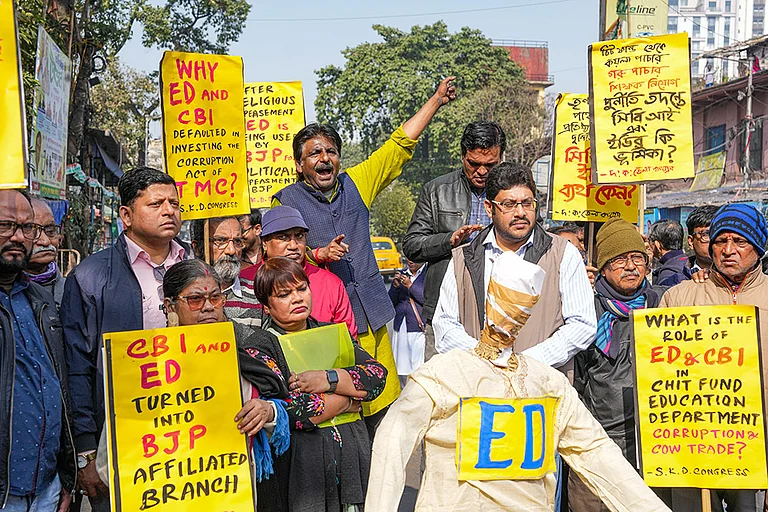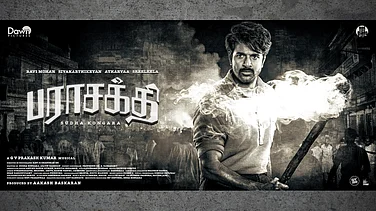Sushmita Sen, Aishwarya Rai, Diana Hayden, Yukta Mookhey, Priyanka Chopra, Lara Dutta, in six years, from 1994 to 2000, India had six global beauty queens, either Miss World or Miss Universe, besides one Miss Asia Pacific in Dia Mirza. Then it waned for some time and in 2017 we had Manushi Chiller winning the Miss World and after a long dry spell of 21 years, Harnaaz Kaur Sandhu won the Miss Universe. Today, Sini Shetty from Karnataka, won the Miss India World 2022.

But the point is there is not much craze among youngsters the way it used to be in the nineties. So, is the Indian beauty queen dead? Or has the concept of beauty changed?
Are beauty pageants losing their charm? Not many are even interested in participating because, unlike before, being a beauty queen hardly guarantees you an entrance to Bollywood. Manushi Chhillar, Miss World 2017, is still on the fringes of celebrityhood. Indeed, it is a long dry spell for the Indian beauty queens. Even if girls are winning beauty contests at national and international level, the craze is gone and none of the youngsters really want to fit to the international beauty standards of height, weight and colour.
But for the first Miss Universe from India, Sushmita Sen winning the crown on an international level was a different experience for her. She says, “The first thing that I see of any Indian winning at international level is that they bring us back to the world map. And today with social media and everything we really do make a huge impact. It makes me super proud to see this 21-year-old child bringing back something that I have been rooting for 21 years after Lara Dutta. I was thinking it was taking way too much time. It felt incredible to see Harnaz Sandhu win the Miss Universe crown.”
Sen adds, “It was not like Harnaz, Lara or me were the best-looking women in the competition but it does give immense importance to the idea as to how you represent yourself in being a global citizen. How can you just look past being just you, or an Indian, a Hindu or a Sikh and to look at the world with an open perspective because that’s what Miss Universes are -an ambassador to the world.”
Sen still believes that the Miss Universe contest has evolved beautifully. “I think now they are giving a lot more importance to the question and the answer rounds. They actually make conversations that impact the younger crowd.” The idea of beauty has shifted to quite an extent from what it was in the mid-nineties to the society’s reception to the beauty contest now. The realisation of beauty is way real now and thanks to the several women’s movement which has changed the entire concept of beauty which is no more just a male gaze. Male gaze no longer alters the way women look at themselves. Now, looking beautiful is about feeling good about one’s own self and the whole attitude about beauty has changed and no one wants to go by any stereotypical way of beauty. Being beautiful is empowering yourself. It is about self-appreciation which has broken away from the typical barbie doll image. Social attitude of beauty has liberated from male gaze.
Mainstream cinema too has made a shift and has made it acceptable to all shapes, colour and size. Let’s be honest with the coming of OTT, nobody is really waiting to be launched by a big banner. Being an actress in mainstream cinema doesn’t mean you have to fit into a certain box. Women have started accepting the way they look. Actress Vidya Balan in a recent interview with Outlook mentions, “Body positivity for me, wasn’t about making people realise this is the way I look. It was first about me accepting my body the way it is. Only when I started accepting the fact that this is who I am and I cannot change the way I look, I started feeling liberated and good about my body. Then, immediately people began saying, “Oh! Look how cool you look and you are so comfortable in your body” and so on. I think there is a daredevil in each one of us because we all dare to dream and dare to challenge the world and fight various odds to live our lives.”
Vidya adds, “For me to be fit, to be energetic and be in the best of my health is very important and this I have learnt over the years. It’s not that I developed a style of my own or anything. But because I am comfortable with my body, I wear things that I like wearing. And when you like what you are wearing, it always looks good on you.”
Beauty is constantly evolving, we have gone from voluptuous to androgynous, to an in between, from the fair skinned light eyed ideal of the previous century to a more diverse spectrum of beauty that accepts all colour and skin tones, hair textures, body types. Mumbai based author Kiran Manral says, “Culturally, we have in the past associated curviness and pale skin with desirability, curves indicated fertility and a woman of wealth who did not need to do manual labour and pale skin indicated she did not need to be out in the sun. If you see the women in the Renaissance masterpieces, they are curvy and full figured which is quite the contrast with what is perceived as the ideal now, which is long limbed and lean.”
A tan is also desirable now, it connotes an outdoorsy, active, healthy personality, as well as being of a class which can afford vacations to tropical climates, which is perhaps why those with naturally pale skin spend so much time tanning themselves on sunbeds when they can't get a natural tan. A lot of what we consider beauty at a point in time is often determined by pop culture, advertising as well as the fashion industry. From the stick thin trend set in place by Twiggy, to the athletic style of Cindy Crawford, to the curves of Sophia Loren and Monica Belluci, to the waif thinness of Kate Moss and now the ultra-voluptuousness of Kim Kardashian, what we define as beautiful is ever evolving.
As to why beauty pageants are losing their charm, Manral adds, “I think a lot of it has to do with the fact that beauty pageants are based on judging women primarily by their beauty. This generation might find it limiting, to be ranked by one's beauty. Winning beauty pageants is seen as the first step towards a career in the film industry in India, so it might interest those who are looking to get a foothold in the Hindi film industry, but beyond that, I'm not sure young girls today are interested at all in participating or even watching the pageants.”
There is so much more interesting content these days available to the youngsters, pageants are an outdated concept. It is wonderful that women today are owning themselves, whether they fit in what is considered beauty or not, they are defining what is beautiful and that is empowering not just to this generation of women but also the generation after them, and I would say the generation that came before them. There is a lot of pressure to look a certain way because of how the fashion and beauty industry tends to present women, but there are now plus sized models for international brands as a norm not the exception, differently abled fashion models, models with vitilgo, older models with their hair white and their wrinkles not airbrushed for beauty and cosmetic brands. I think brands are realising that consumers want to see women like themselves using their products and not feel that they are unrealistically aspirational in the image they sell. This also comes from a space where women are saying we will no longer be commodified, and this is who we are. Beauty will always be an advantage in any society but women are accepting of themselves when they don't fit traditionally prescribed norms of beauty and that acceptance, that confidence is a wonderful thing to behold when one encounters it.
The 90s and also the early 2000 was the time when most young girls aspired to be a beauty queen. The beauty queens were brand ambassadors for the country and were put on a high pedestal. Everybody wanted to be as smart and articulate as Shusmita Sen. But the scene is very different now. In an earlier interview with Outlook Pradeep Guha elucidated on why beauty pageants had lost their charm. Guha had said that it was difficult to hold on to the glory of any contest for such a long time.
Celina Jaitly who has also been the winner of the coveted title of Miss India and Miss Universe runner-up, actress and a celebrated beauty icon says, “I won Miss India and Miss Universe runners up at a time when pageants were no longer about just stereotypical beauty. Pageants began to recognise beauty as the energy inside that informs the outer appearance, emphasis on inner self-confidence and fostering empowerment to yourself and others which requires a lot more skills than a makeup brush or hairspray. The stereotypes had been shattered as diversity in international pageantry also took the main stage and led to beauty pageants becoming a “National sport” of great pride specifically with outstanding performances by India.”
It in the nineties it was first Madhu Sapre, a young simple Maharashtrian athlete and model who opened the doors for the Indian beauty queens in the international arena in the year 1993. She won the first runner’s up contest. Sapre believes that beauty pageants has lost its exclusivity. There are just too many contests spurting out.
Remembering her days Sapre says, “Once I came back from the contest with the runners up prize, I found myself being pursued by several people including some designers whom I had not worked with in the past. In a way, I was a trailblazer for several contestants who went after me and went on to achieve great heights. It opened a world of opportunities for me after winning the second runners up position. Lots of work and lots of traveling. In between circa 1993 to m1996, I also had modelling experience with a very prestigious modeling agency in London, called Models one, then run by my dear friend Jose Fonseca and her partner, and in a Paris agency called Partners.
In the 90s and early 2000’s a lot of effort and investment was made into grooming the beauty queens. Remembering her modeling days Jaitly says, “In my modelling days I was a struggling model in Kolkata. A shoot thanks to my makeup artist-guardian led to me being noticed by one of the biggest talent scouts in India. But I had to apply like all girls and was one of the 200 girls from east India who were shortlisted and called with a swimsuit and no makeup to the Taj Bengal for an intimidating panel to evaluate. I was told by Pradeep Guha (the man who discovered Sushmita Sen, Aishwarya Rai, Lara Dutta and PriyankaChopra) that I was of borderline height as I was “just about 5.6 inches” but he saw something in me which was unusual. He was right, I went on to be the shortest contestant ever to hold a title at the Miss Universe pageant.”
Jaitly admits that it was her modeling career that led her to be discovered by the famous Miss India scout and mastermind Pradeep Guha who was with the Times Group then. While the glamorous industry of Bollywood owes a lot to the Miss India pageant from Nutanji to Aishwarya Rai to Priyanka Chopra. She says, “Actor-director- producer, Feroz Khan, signed me for my debut film JANASHEEN literally over the phone when I was in Peurto Rico at the Miss Universe pageant. While the pageant provides you immense visibility and publicity for people to notice you, you are pretty much on your own one your reign is over, that’s why only ten percent have had an impact on the silver screen, and those who did, definitely will be remembered for posterity.”
But the question that arises is why over the years, beauty pageants are losing their charm? Jaitly explains that the pageant is losing relevance because people are losing interest due to many reasons. “The emergence of social media and globalisation and I hate to say this but the quality and grooming of the girls participating has definitely decreased. There is some lack of diversity in the choosing of contestants also and in most girls, the passion and commitment to represent India has diminished.”
Many believe that the contestants today look at it only as a way to further their career in films. “When we participated our aim was to make India proud, films happened for some of us successfully as a side effect of representation but now it’s the other way around. Our commitment and discipline also came from years of hard work in the modeling industry prior to the pageant also,” adds Jaitly.
Sushmita Sen echoes, “Usually, girls who participate or go into such platforms don’t understand what it takes to be a beauty queen. They just go into the competition because they like the idea of celebrating beauty and they believe they can have a future in films or modelling and a contest like this will give them a platform to get discovered. And then there are kids who are very patriotic and I know that because that’s my story because there are many armed forces kids who participate in these competitions because our families are proud to fight for the country and are proud of their daughters who go to represent India.”
People have realized that we need to change the rules, not our bodies. We must decide what we see when we look in the mirror. Meghna Pant, author says, “Half-truths and jingoism cannot jolt our self-esteem, nor can tucked and shaped bodies in beauty pageants. If we judged women in these pageants for their thinking, talent or passion, instead of outdated notions of beauty and perfection, the level of participation would be different.”
The idea of beauty has changed over the years. Women’s natural fullness was last enjoyed when we were in domestic seclusion. But once we stepped out into the male sphere, linear bodies replaced curvaceous ones, forcing the body to become a prison that once home was. Therefore, over the last decade, a woman’s weight became as much a societal concern as her virginity was two decades ago. In this decade though, our entire moral fulcrum has shifted. We now scrutinize a woman’s opinion, confidence and social media influence the way we once scrutinized her weight.
Pant says, “Judging women was not ultimately about their looks but about the ability to tell them what to do about their looks. To make sure they knew they are being watched. Because when men controlled women’s beauty evaluation, they were free from their own beauty being evaluated. This has now changed. We have now shed the masculine privilege of pronouncing judgments on women's looks. And we have, in our own way, equalized male and female beauty parameters.”
Pant explains that youngsters are not given life instructions so why would they accept beauty instructions? This prescribed way to look is just another way of keeping women down and diminished. The more emancipated we are at work, the more impoverished we are with our bodies. A woman who does not feel inadequate will not be able to fix herself. The only thing that suffers is the stability of our moral universe. Young people reject such notions.
This preoccupation with women’s looks is exasperating. This cruel obsession with other women’s bodies and our own bodies must stop. Cultural negation that permits beauty’s power inequalities needs to go. The worth of a woman should not be tied to her looks. Beauty is not an imaginary weapon wielded to drive our insecurities to distraction. Whether a woman chooses to be processed or unprocessed, in the body or mind or both, it must ultimately be her choice.






.png?w=801&auto=format%2Ccompress&fit=max&format=webp&dpr=1.0)



















